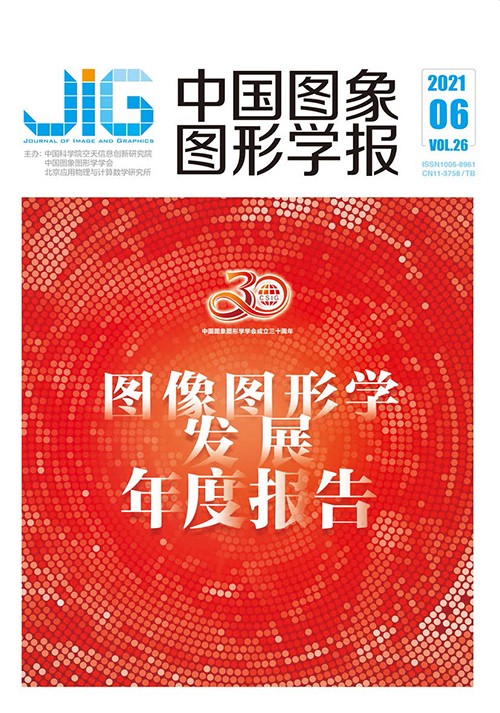
三维视觉测量技术及应用进展
张宗华1, 刘巍2, 刘国栋3, 宋丽梅4, 屈玉福5, 李旭东5, 魏振忠5(1.河北工业大学机械工程学院, 天津 300401;2.大连理工大学机械学院, 大连 116024;3.哈尔滨工业大学电气工程及自动化学院, 哈尔滨 150001;4.天津工业大学人工智能学院, 天津 300387;5.北京航空航天大学仪器科学与光电工程学院, 北京 100191) 摘 要
三维视觉测量是计算机视觉与精密测量原理交叉融合的前沿高新技术,是工业4.0的基础支撑,是以网络化、智能化制造为变革特征的先进制造业的核心关键技术。经过几十年的发展,三维视觉测量技术在基础研究和应用研究上均获得了快速深入发展,形成了理论方法、技术工艺、系统研发和产品应用四位一体较为完备的方向体系,呈现出理论系统化、方法多维化、精度精准化和速度快捷化的发展趋势,成为智能制造过程控制、产品质量检验保证和装备整机服役测试的不可或缺的优选技术。本文主要围绕单相机、双相机和结构光等典型三维视觉测量技术展开论述,概要介绍其关键技术内涵,综述其发展现状、前沿动态、热点问题和发展趋势。重点论述条纹投影三维测量技术和相位测量偏折术。最后给出了三维视觉测量的发展趋势与未来展望。
关键词
Overview of the development and application of 3D vision measurement technology
Zhang Zonghua1, Liu Wei2, Liu Guodong3, Song Limei4, Qu Yufu5, Li Xudong5, Wei Zhenzhong5(1.School of Mechanical Engineering, Hebei University of Technology, Tianjin 300401, China;2.School of Mechanical Engineering, Dalian University of Technology, Dalian 116024, China;3.School of Electronical Engineering and Automation, Haerbin Institute of Technology, Haerbin 150001, China;4.School of Artificial Intelligence, Tiangong University, Tianjin 300387, China;5.School of Instrumentation and Optoelectronic Engineering, Beihang University, Beijing 100191, China) Abstract
3D vision measurement is a new and advanced technology of computer vision and precision measurement. It is the basic support of industry 4.0 and the core and key technology of advanced manufacturing industry characterized by networked and intelligent manufacturing. After decades of development, 3D vision measurement technology has been developed rapidly in basic research and applied research. It has formed the relatively complete direction system of four parts: theoretical method, technical process, system development and product application. 3D vision measurement technology presents a trend of systematic theory, multi-dimensional method, precise precision and rapid speed, which has become an indispensable optimization technology of intelligent manufacturing process control, product quality inspection and guarantee, and complete equipment service test. This paper mainly focuses on typical 3D vision measurement technologies such as single-camera, double-camera and structured-light, and briefly introduces the connotation of the key technologies and summarizes its development status, frontier trends, hot issues and development trends. Single-, stereo-, and multiple cameras-based measuring system belong to passive vision, without external energy being projected on the surface of the object under test. Active vision technique projects some kind of energy onto the object surface, mainly including point-scanning, line-scanning, full-field, and time of flight. Therefore, active vision technique has been widely studied in academic and applied in many fields because of the advantages of high accuracy, non-contact, and automatic data processing. In this paper, the 3D measurement technique of fringe projection profilometry (FPP) and phase measuring deflectometry (PMD) are mainly discussed. FPP-based techniques are widely applied to measure the diffused surface. A set of or one fringe patterns are generated in software and projected by a digital light processing (DLP) projector. From a different viewpoint, an imaging device, normally a charge coupled device(CCD) camera captures the deformed fringe patterns modulated by the object surface under test. Multiple-step phase shifting algorithm or transform-based algorithm (such as Fourier transform, windowed Fourier transform, wavelet transform) can be used to obtain the wrapped phase map from a set of fringe patterns or from one fringe pattern. The wrapped phase needs to be unwrapped by using spatial phase unwrapping or temporal phase unwrapping. Spatial phase unwrapping is suitable to measure objects with smooth surface, while temporal phase unwrapping can measure objects with large step and/or discontinuous surface. In order to obtain 3D shape data, the measuring system needs to be 3D calibrated, which builds up the relationship between unwrapped phase map and 3D data. The absolute phase and the pixel position will be transferred to depth data and horizontal coordinates, respectively. The error will be analyzed in detail to improve the measurement accuracy. PMD-based techniques are mainly applied to measure the specular surface because they have the advantages of high accuracy, large dynamic, automatic data processing, and non-contact operation. The generated fringe patterns are displayed on the liquid crystal device (LCD) screen, instead of being projected on to the measured surface. The reflected fringe patterns by the specular surface are captured by a CCD camera according to the law of reflection. The obtained fringe patterns are processed by the same algorithms in FPP. In order to measure dynamic specular surface, single shot PMD methods have been developed. One fringe image has been modulated by orthogonally modulating two fringe patterns into one image. Or one composite fringe image can be generated by modulating three fringe patterns into the primary color channels of a color image. Therefore, multiple fringe patterns can be obtained from single shot image. The obtained phase information is related to the gradient of the measured specular surface, instead of the depth, so integration procedure is needed to reconstruct the 3D shape. Many integration methods have been studied, such as radial basis function, least square method, and Fourier transform method. Some researchers developed a direct PMD (DPMD) method to measure specular objects with discontinuous surface. This method builds up the direct relationship between the absolute phase and depth data, without integration procedure. One important step in PMD is how to calibrate the geometric parameters of the measuring system, mainly the distance and orientation between the LCD screen, the reference plane (the measured specular surface) and the camera. Error sources have been analyzed to improve the accuracy of the measured data as well. 3D shape data have many applications in the fields of aeronautics and astronautics, car industry, advanced equipment manufacturing measurements, health care industry, and conservation of antiquities. These applications will be described. Finally, the development trend and future prospect of 3D vision measurement are given. Although 3D measurement techniques have been matured, many aspects need to be further improved. The most important are the following two: accuracy and speed. FPP-based and DPM-based techniques can reach micrometer and nanometer level, respectively. Some applications need more high-level accuracy. The third trend is extreme size and environment. The fourth are to measure objects with complex attribute surface. For example, there are objects having high reflective surface and specular/diffuse surface. The fifth trend is on-site measurement, which can be used in machining tools and assembly line. The last one is portable measurement, so that it can be easily integrated into other components.
Keywords
3D vision measurement fringe projection profilometry phase measuring deflectometry phase calculation calibration review
|



 中国图象图形学报 │ 京ICP备05080539号-4 │ 本系统由
中国图象图形学报 │ 京ICP备05080539号-4 │ 本系统由